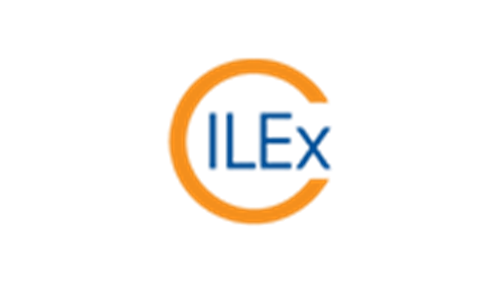Whatever you choose, it’s always a good idea to plan your entry and exit strategies and basic risk management rules. On the other hand, a futures trading plan that’s centered around fundamental analysis might generate buy or sell signals based on crop or energy inventory reports. For instance, a trader may short an oil futures contract if weekly oil inventories grow at a faster pace than analysts had expected. Of course, some traders may incorporate both technical and fundamental analysis into their futures trading plan. Similarly, a trader can take a long position, which means speculating the prices of underlying assets will go up and will trade above the original price at the contract expiry. If that happens, they will profit, and the futures contract will be sold at the current price and closed before expiration.
These traders include producers, consumers, or investors with exposure to the underlying asset who employ futures contracts to lock in prices, effectively insuring against price volatility. Futures trading is facilitated by futures exchanges, like the Chicago Mercantile Exchange (CME), and requires investors to have an load balancing between liquidity providers using ticktrader liquidity aggregator approved brokerage account. When traders or companies enter a futures contract, it obliges them to sell or buy the underlying assets at a set price and date in the future. Speculators are individual investors who want to benefit from the underlying asset's price movements and don't want to receive the physical assets.
However, it would give you $300,000 in notional value, three times the amount by cash alone or through your margin account at your broker, for significantly less of an outlay in actual cash. Should you fail to rectify the shortfall, your broker could suspend your trading privileges or shut down the account entirely. When you consider that you’re not buying actual assets but derivatives of those assets, the mark-to-market process is the most sensible way to handle these bets.
Our money management rules stipulate that we risk no more than 1% of our futures trading account on any one trade and our broker requires a margin of $12,000. Whether you're looking at stock market futures, options stocks, commodity stocks, equity futures, contract financing the scientific controversy behind memes and more. Take a look at our recommended brokers to uncover trading opportunities, engage in risk management and access several commodities markets. Due to the highly liquid nature of futures markets, traders can quickly move in and out of their open positions.
The futures market has diverse participants, each with distinct strategies, objectives, and roles. Among these are hedge funds, individual traders, and market makers, who collectively contribute to the liquidity, depth, and efficiency of the market. Futures allow market participants to hedge bets or speculate on potential price moves. With a tick value of $12.50, if a trader buys 10 contracts of the E-mini S&P 500 futures, they would be looking at a profit or loss of $125 for every one-tick movement (10 contracts X $12.50). If the E-mini S&P 500 futures fluctuates on average around 50 ticks a day, that means the trader could lose or gain up to $6,250 a day ($125 for every one-tick movement X 50 ticks).
- These points are just as valuable if you’re a novice investor or if you’re a seasoned pro.
- Say the S&P 500 index recently broke out to a new all-time high, and we want to fade the move, hoping to book profits on a retracement to the initial breakout area around $4,720.
- For millennia, forward contracts have been employed to lock in future prices for financial stability no matter what happened to the harvest that year.
Whereas the futures exchange is the one setting the initial margin, your broker will require you to have additional funds in your account, called maintenance margin. The minimum amount should be on your account at any given time, usually between 50% to 75% of the initial margin. For millennia, forward contracts have been employed to lock in future prices for financial stability no matter what happened to the harvest that year. But many have also used them to speculate and profit from changing prices in the market. To capture the same $100,000 in the Nasdaq-100, you could buy one Nasdaq-100 E-Mini future for $15,000 (based on the price in our example above, not the actual market price at this exact moment).
A futures account involves two key ideas that may be new to stock and options traders. One is “initial margin,” which is not the same as margin in stock trading. Futures are derivative contracts that let you speculate on the future price of some asset or commodity, or to let you hedge against existing positions. Because they utilize leverage, futures can amplify your bets, making for larger returns, but also larger losses. Most futures contracts are traded through centralized exchanges like the Chicago Board of Trade and the Chicago Mercantile Exchange (CME). Many cryptocurrency brokers, such as Binance, offer perpetual futures--a contract without an expiry date--allowing traders not to worry about an expiry month.
The buyer agrees to buy a stock at a specified future date for a set price. The seller agrees to sell that same stock to the buyer based on the terms of the derivative contract. Most traders use fundamental and technical strategies, or a combination of the two, to determine favorable price conditions before entering or exiting a position. Once you know your risk tolerance and management strategy, you can apply them to the next step, defining your entry and exit strategies. Please note that trading futures can involve risk, so you should carefully consider your knowledge level and financial situation before you trade. One way to get started is to explore futures that are relevant to the companies, industries, or sectors you’re already knowledgeable about.
Futures Trading Strategies
You might also review news and research related to the S&P 500 to identify favorable conditions that support your strategy and help you determine the best time to enter or exit a position. On the other hand, investors should understand that futures trading can be fairly complex and it can lead to overleveraging. It may also be difficult to juggle and monitor expiry dates, especially if investors trade multiple contracts.
Learn more about trading futures through Charles Schwab Futures and Forex LLC.
Please read the Risk Disclosure Statement for Futures and Options prior to trading futures products. Many speculators borrow a substantial amount of money to play the futures market because it's the main way to magnify relatively small price movements to potentially create profits that justify the time and effort. Someone wanting to hedge exposure to stocks may short-sell a futures contract on the Standard & Poor's 500.
It also makes futures trading riskier, as even though the initial margin is low if the trade goes against you, investors risk losing more money than they invested. All in all, when speculating underlying asset prices of futures, technical analysis is recommended. As a beginner, start small, choose a reputable broker, and opt for an asset class you are most familiar with. If bitcoin mining calculator one wheat futures contract includes 5,000 bushels, and it sells at $12,50 per bushel, it is worth $62,000 of wheat, meaning that you would need less than 5% to trade it. As brokers set them, they can also adjust them, and the maintenance margin is primarily based on volatility. However, futures trading does come with higher risks and isn't well-suited for beginner investors.
A futures contract is an agreement to buy or sell the underlying asset at a predetermined price on a specific future date, committing both parties to fulfill the contract at maturity. By contrast, an option gives the buyer the right, but not the obligation, to buy (the call option) or sell (the put option) the underlying asset at a set price before the option expires. Futures and options are derivatives, financial instruments derived from the value of underlying assets like commodities, currencies, or indexes. The key difference lies in the obligations they impose on buyers and sellers. Currency or forex trading involves making money or hedging risk in foreign exchange rate changes.
Commodities represent a big part of the futures-trading world, but it’s not all about hogs, corn and soybeans. Stock futures investing lets you trade futures of individual companies and shares of ETFs. With speculators, investors, hedgers and others buying and selling daily, there is a lively and relatively liquid market for these contracts. The investing information provided on this page is for educational purposes only. NerdWallet, Inc. does not offer advisory or brokerage services, nor does it recommend or advise investors to buy or sell particular stocks, securities or other investments. Check out trading insights for daily perspectives from futures trading pros.
Investors, fund managers, and financial institutions use bond futures to protect their portfolios against interest rate changes or to take positions based on their interest rate outlook. Index futures are a way to gain exposure to an entire index in a single contract. The Financial Industry Regulatory Authority requires a minimum of 25% of the total trade value as the minimum account balance. While much has changed as forwards have become standardized as futures contracts and exchanges offer ever-more-sophisticated products, the basics remain the same. Below, we guide you through the kinds of futures, who trades them, and why, all while showing that you don't need to get on horseback to beat news of a grain-filled ship arriving to gain from these investments.
Energy Prices
Before trading these derivatives securities, eager beginners should understand what futures are, how they work and why both professional and experienced retail investors use them. Finally, a trade journal can be a valuable tool for accountability and self-reflection. The above example is hypothetical and meant to illustrate the importance of position sizing as it relates to risk management. Clients can learn more about trading futures on thinkorswim by logging in to our course.
Step 5 – Understand how money works in your account
If stocks fall, they make money on the short, balancing out their exposure to the index. Conversely, the same investor may feel confident in the future and buy a long contract - gaining a lot of upside if stocks move higher. Before the expiration date, you can decide to liquidate your position or roll it forward. Some traders (speculators) specialize in 1 or 2 futures sectors simply because they have an edge and understanding of those markets’ fundamentals and economic trends.






























 WhatsApp
WhatsApp